The ‘UK’s most sustainable neighbourhood’ is being built in East Sussex, with food at its heart and retailers encouraged to embrace the concept
The self-proclaimed “UK’s most sustainable neighbourhood” is coming, and big food retailers should embrace the concept, according to the people behind it. Dubbed the Phoenix project, it’s the work of Human Nature, a ‘campaigning development company’ founded by two former Greenpeace directors working in partnership with policy think tank The Food Foundation. It gained planning permission in February – news that Human Nature announced with the headline “The Phoenix is set to rise”.
The Phoenix’s “new model” of urban living “definitely provides questions for supermarkets and the food sector”, Food Foundation head of campaigns and development Jo Ralling told The Grocer at the time. The site – in the market town of Lewes, East Sussex – has “a Tesco right opposite and a Waitrose at the other end of the road”, she said. “I would like to think they will embrace and get excited by what’s happening and look at what they’re going to do.”
Retailers beyond Lewes should also take note, because the Phoenix will be “a blueprint for sustainable placemaking and social impact that can be deployed at scale”, according to Human Nature. “If we can get it right in one place we can get it right anywhere,” adds Ralling.
So, what exactly is Phoenix, and where does food and food retail fit in? The site itself is a 7.9-hectare brownfield site next to the River Ouse that in the 19th century was home to an ironworks – also called Phoenix. Situated on a floodplain, it is to gain new flood defences, a new river crossing, and 685 homes (of which 30% will be affordable).
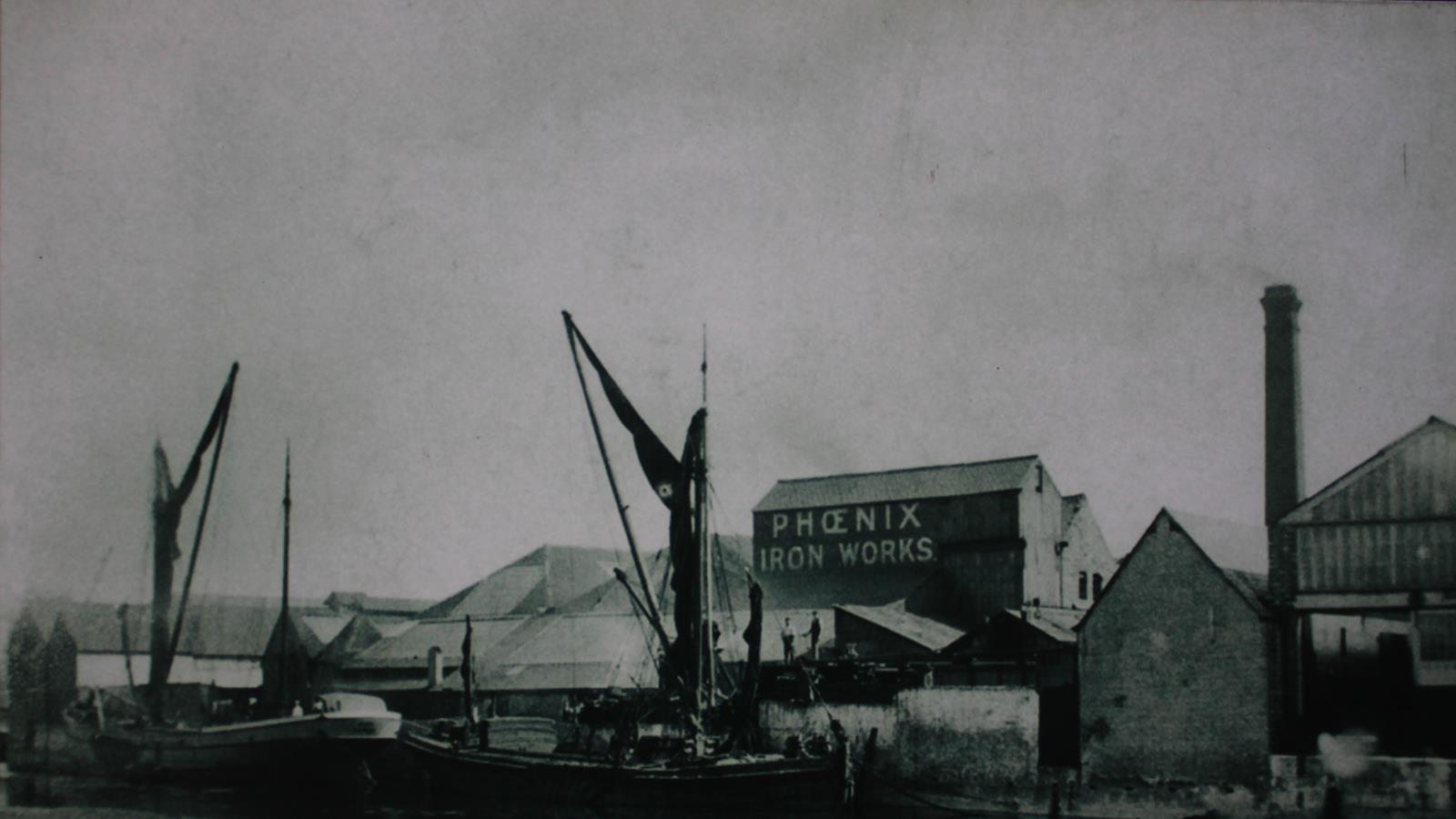
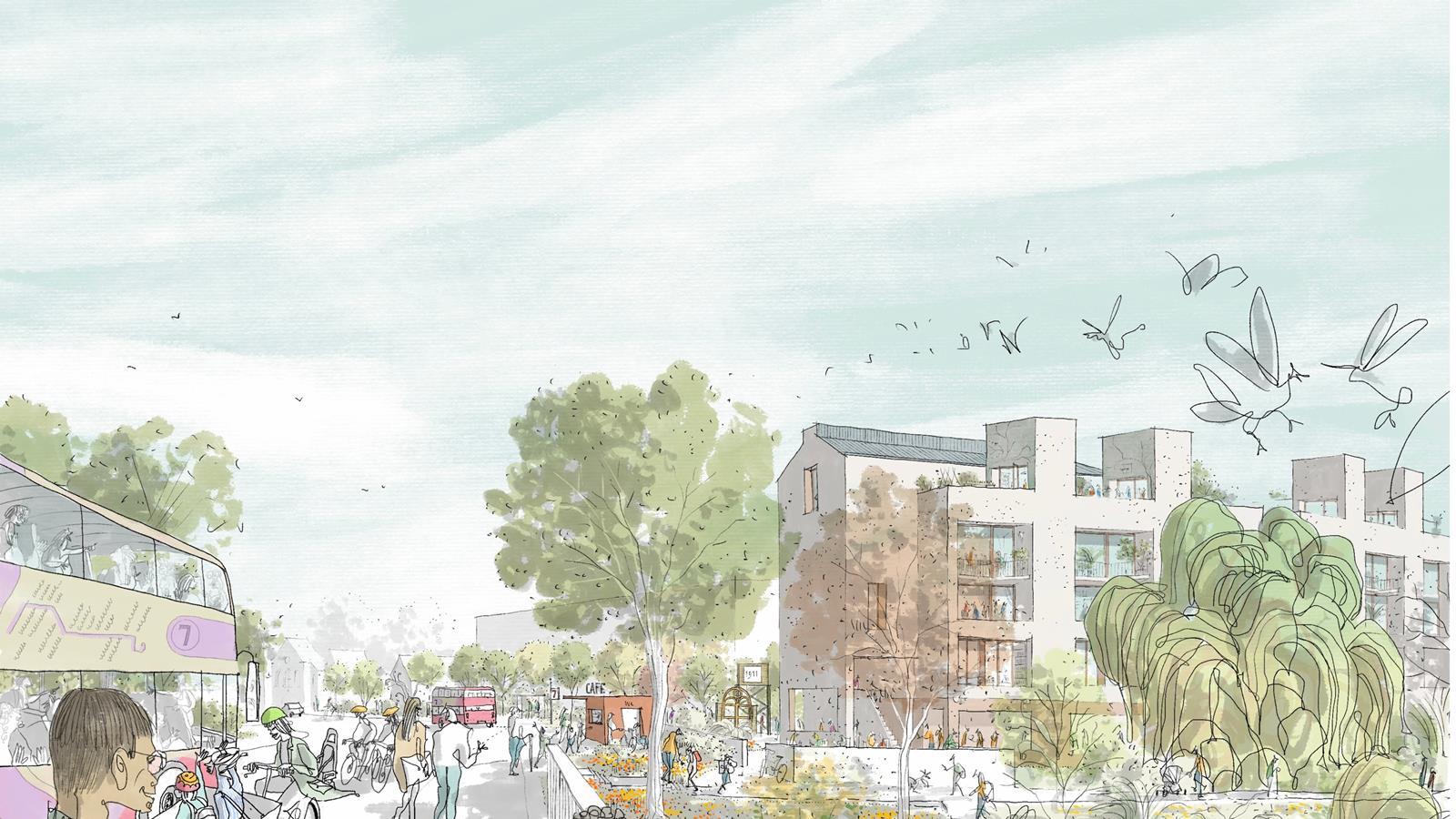
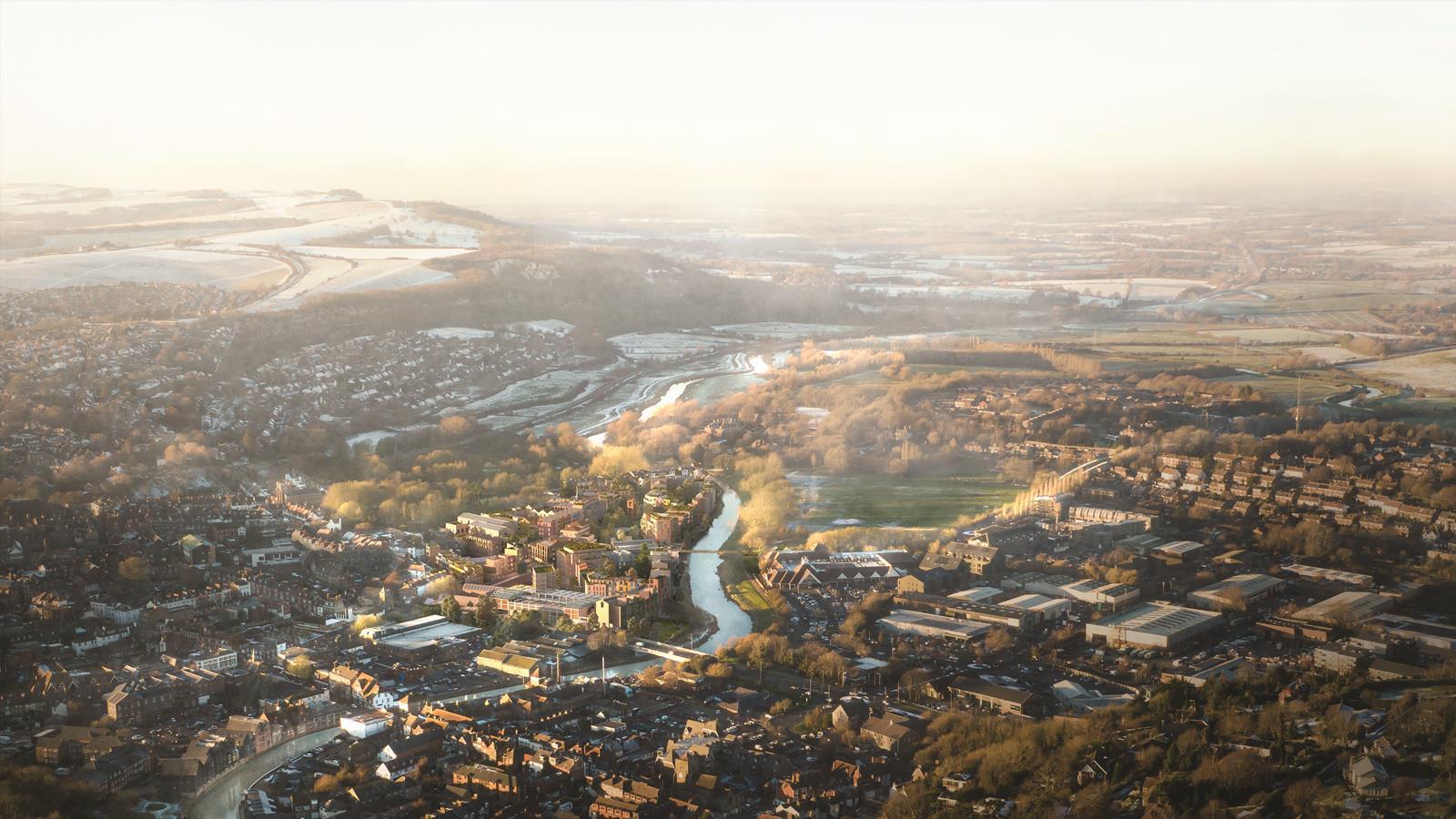
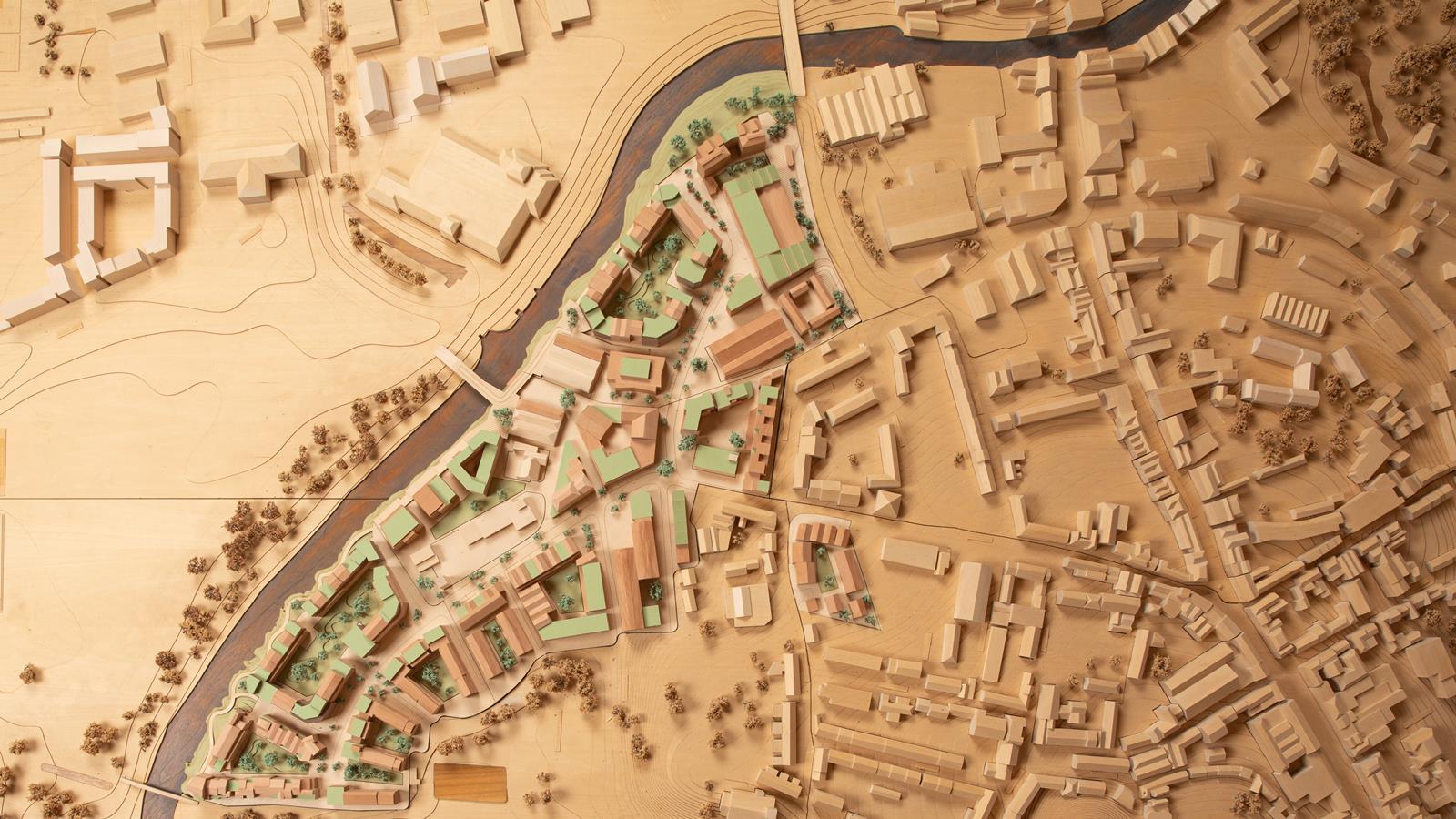
An artist’s impression of the Courtyard Gardens in the Phoenix project in Lewes
A CGI aerial view of the Phoenix project by architect Ash Sakula. The developers claim the 685-home site will be ‘the UK’s most sustainable neighbourhood’
Jonathan Smales, one of Human Nature’s two former Greenpeace director founders along with Michael Manolson, says it will be “a place of elegantly designed buildings made using local materials, streets safe for children to play in, with most daily needs met within a short walk and where it’s easy to meet and socialise with your neighbours”.
Lewes – which is also where Human Nature is based, in Phoenix House – was home to 18th-century political activist Thomas Paine, who wrote: “We have it in our power to build the world over again”, and the town has a reputation for radicalism and eccentricity. Its medieval streets contain many specialist, independent retailers.
So it’s “not surprising” the Phoenix project has gained support there, says Paul Chatterton, professor of urban futures at the University of Leeds. “There’s a real social network behind it in that town.” Lewes is also prosperous: ‘cash-restricted families’ make up less than 1% of the population, compared with a UK average of 11%, based on Acorn data from CACI. On the other hand ‘quality-driven families’ make up nearly 40% of Lewes’s population compared with a UK average of 12%. Yet it’s also a place with low car ownership, according to Human Nature, which cites 2021 Census data putting the proportion of households without one at above 45% in parts of central Lewes.
Cars in the Phoenix development will be even more scarce. Given its design as a walkable ‘three-minute neighbourhood’, there will be no on-street parking other than for disabled people. The aim is to enable “a shift away from reliance on private vehicle ownership”, facilitated by the provision of a ‘co-mobility hub’ at the edge of the development, where there will be 50 electric cars to hire, along with electric bikes and e-cargo bikes.
Health and food strategy
Central to the development will be a health and food strategy, according to the Food Foundation, including a community canteen providing locally sourced, affordable meals. “Children at the Phoenix will be able to attend a brand-new nursery with access to healthy fresh food and where food education will be central to its ethos,” the charity says. There will also be “a new health centre where social prescribing and prevention can tackle obesity and diet-related diseases”.
The land acquisition has been funded by Human Nature and local investors, while construction and delivery are eligible for funding from Homes England, according to the development company. The project is aiming for “spades in the ground next summer and first homes available in 2027”, says Human Nature head of social imagination Clarissa Bromelle. Yet finer detail, in terms of that food strategy at least, remains at the ideas stage. “We’re looking at the moment at food mapping the whole of the site,” says Bromelle. “So, looking at where the opportunities are to grow food and foster a relationship with food across the site for the community that lives here and also hopefully the wider town.”
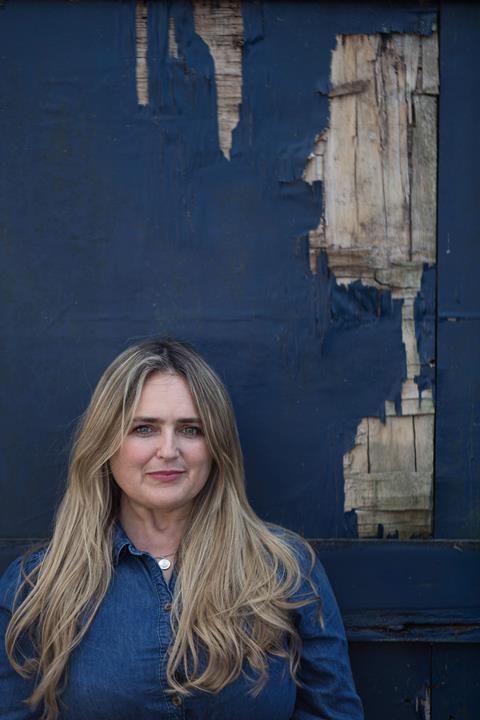
But it won’t grow all its own food, because “to be truly self-sufficient you need a huge amount of land. It’s not that – it’s more fostering the connection between food and food growing,” she says, along with “all the wonderful things around that, like communities getting together to grow together, children learning from older people about how to plant seeds and grow them, grow your own courgettes, et cetera. It’s also tapping into local farms. There’s a local network of farms around us that we already have relationships with.”
The Food Foundation’s Ralling says: “It’s about food education as well. If you have a herb garden growing outside somewhere, then people are more connected with going outside and picking some rosemary while cooking a stew. If children grow up with an apple tree on the site, they’ll know that apples come from trees.”
The plan is to have “limited retail” on site, because “we don’t want to take away from the high street”, adds Bromelle. “There might be one small grocery shop,” Ralling adds, and “it’s more likely there might be some work units that can incubate new food business ideas. There are lots of retailers around here already. You can walk to retailers within five minutes of the site.”
Retail engagement
So, how will supermarkets be able to get involved? “The detail is not currently worked through, but the community kitchen might be somewhere there’s always soup that’s sold at an affordable price. That food might be made from donated food from retailers – there will be all sorts of opportunities,” says Ralling.
A retailer could also sponsor the food education classes, Ralling suggests – “the ambition is to have after-school cookery clubs”. If a major supermarket “can come in and provide ingredients for that, provide recipe cards, there’s huge scope for them to engage”, Ralling adds. “We need to sit around a table with them and explore the opportunities.”
Supermarkets are open to the possibility. “They haven’t spoken to us,” says a source at one. “Retailers need to be part of driving change.”
Nikolas Badminton, a Toronto-based futurist who helps major food brands explore the question of ‘What if?’ believes supermarkets can drive the kind of change that projects such as the Phoenix would welcome – by localising their supply chains more.

“What’s the possibility of one of the large supermarkets having a section that celebrates food from within 50 to 100 miles of that location, having specific buyers that support them?” asks Badminton, who’s worked with Mondelez, P&G and McDonald’s, as well as governments.
It’s a model starting to emerge in Canada, he says: “In British Columbia, Save-On-Foods actually have specific parts of the supermarket that stock local produce from local producers.”
However, Leeds University’s Chatterton sees limits on the preparedness and ability of supermarkets to engage in the kind of change called for. Chatterton lives in a community created with a similar ethos to the Phoenix, but on a smaller scale. Lilac, an acronym for Low Impact Living Affordable Community, consists of 20 strawbale ‘eco-build households’ in west Leeds, built in 2013. Chatterton says it’s part of a “community housing movement”, along with the much bigger Phoenix project, which he believes can achieve scale.
“There’s no reason we couldn’t take pockets of land in every city or town across the UK and do something similar,” he says. “It’s what people want. There is demand. People don’t want to live in Barratt boxes. That’s just 80% of what the market supplies.
“Most towns in Britain have probably got a willing bunch of community-minded councillors. You could have a Phoenix in every town across Britain. What are the sticking points? Land supply, probably. The finance is probably there. A lot of corporations have ESG agendas and need to show they’re doing stuff.”
But he argues that supermarkets, ultimately, because of their corporate nature, are “not going to be locally sensitive retailers… We’re not going to crack this problem with the model we’ve got, and it’s not very palatable because it means big changes in the retail sector.
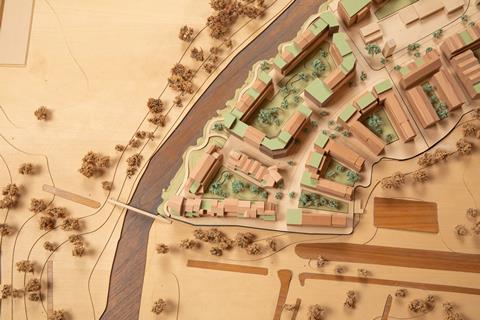
“Look at the unsustainability of the supply chains, where the products are coming from – everything from production to consumption is really carbon-intensive, so they’re not going to cut the mustard in terms of where we need to get to on net zero targets. But there is mileage in how you build alternatives around that. We’re not going to take on the likes of Sainsbury’s and Asda head-on, but how do we create a local retail sector offer?”
Chatterton plans to talk to the Phoenix project about community-supported agriculture (CSA) – a “global movement” connecting producers directly with consumers. “You get a big bit of land, you start to produce food, and they sell it in advance, so the consumer buys a year’s worth of food credit,” explains Chatterton.
“You get a big bit of land, you start to produce food, and they sell it in advance, so the consumer buys a year’s worth of food credit”
Paul Chatterton, professor of urban futures at the University of Leeds
An example of CSA can be found in the community-owned Kirkstall Valley Farm in Leeds, which sells weekly boxes of fresh vegetables for £4.25 on subscription. The farm uses a team of part-time growers and is heavily reliant on volunteers. “And then what Phoenix should do is have a town store, run by the town, with the profits recycled back into the town, so you get these virtuous cycles of health,” says Chatterton. “Because what happens with supermarkets is that a lot of every pound spent goes out of town.”
However, imperfect as it may be, Badminton would like to get straight that “we’re not going to get away from the industrial food system. The growth of cities, culture, GDP and countries comes from industrial food supply,” he says. “It kickstarted about 10,000 years ago and it’s not going anywhere.”
So, what does it become? To answer that question is to speculate, says Badminton: “What if, in 2035, Tesco dedicates 25% of its square footage to local food? And then you can start looking at the effects of that – the positive and the negative – as a thought experiment. And then you can look at your strategy.”
One unforeseen benefit might be greatly strengthened “brand affinity” in consumers. “You can create these hypotheses and start to test them very quickly in any kind of store,” adds Badminton. And that’s how brands can “connect future ideas to now”, he says.
The Phoenix project is creating one idea of the future. For supermarkets, there’s no risk in exploring where they might align while also creating their own.
What if retail property people do it?
Get Living is another developer creating what are billed as more sustainable, walkable neighbourhoods – but bringing retail with it. The company, located in Southwark, London, is part of the small but growing build-to-rent sector, which aims to disrupt the traditional rental market.
Get Living started in 2013, transforming the former Athletes’ Village in London’s Olympic Park into the East Village neighbourhood – home to more than 6,500 residents, along with shops and restaurants.
Other Get Living developments include two neighbourhoods in London – in Elephant & Castle and Lewisham – and ones in Maidenhead and Manchester.
Because Get Living consists of a team from a commercial property background, it is not “the tail wagging the dog from a retail perspective”, says Richard Allen, asset director for Elephant & Castle. “It’s actually people who come from that background and understand retail and the relationship with retailers and the curation of retail, critically.”
East Village has a Sainsbury’s, while the focus of other retail there is independent, because it sits alongside the vast Westfield Stratford City shopping centre. Get Living’s New Maker Yards in Manchester is also home to independent retailers, along with a Co-op. “But, again, it’s a question of what works in the location,” says Allen.
“It’s about developing our neighbourhoods into destinations. That might be food markets, events. East Village is a very good example of that. We’ve got experiential, cultural and community spaces, places to work, for leisure, everything that you would expect within a small town, within a small community.”








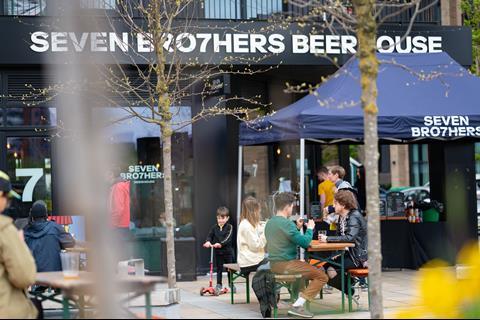
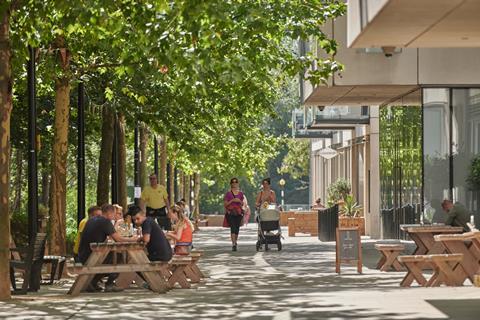
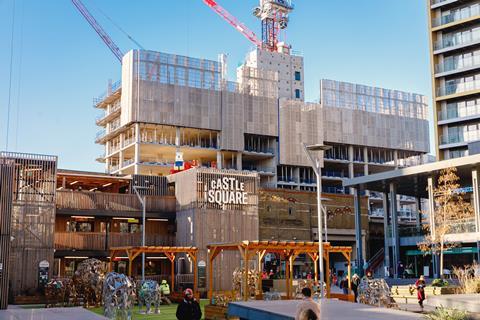




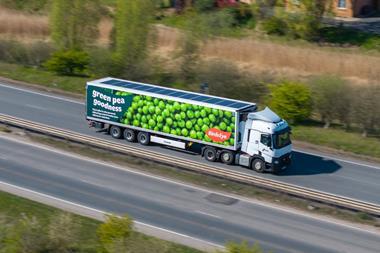







No comments yet